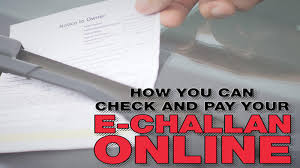Voluntary Provident Fund (VPF) is a voluntary contribution towards one’s retirement fund beyond the mandatory limit.
If you are salaried individual, you should know
that a part of your cost-to-company (CTC), that is, 12 percent of your basic salary (plus dearness allowance, if any) is contributed towards the Employees’ Provident Fund (EPF). Any further contribution beyond the 12 percent is known as the VPF.
that a part of your cost-to-company (CTC), that is, 12 percent of your basic salary (plus dearness allowance, if any) is contributed towards the Employees’ Provident Fund (EPF). Any further contribution beyond the 12 percent is known as the VPF.
As the name suggests, it is a voluntary contribution and employees are not obligated to opt for it.
Features of VPF
- One can invest up to 100 percent of their basic pay (plus dearness allowance, if any) towards VPF.
- Interest earned on the amount is the same as EPF. Interest on EPF is revised annually and decided by the government.
- Once an employee registers for the VPF, they cannot choose to discontinue or terminate the account before the completion of five base years.
- VPF contribution is also eligible for deduction under section 80C of the Income Tax Act.
Who can apply and how to apply for VPF?
As it is an extension of the EPF scheme, any salaried individual eligible for the EPF scheme and is already a member can participate.
The employee can apply to contribute towards the EPF through the Human Resource/Finance department at their workplace and fill the necessary application form.
The extent of contribution is up to the employee to decide.
Advantages of VPF
Risk free
Contributions made towards EPF/VPF are highly secure as these are backed by the Government of India, which means you will also get the guaranteed interest rate. In comparison to any long-term retirement schemes offered by a private company, EPF/VPF is the most secure.
High interest rate
The last declared interest rate on contributions made towards EPF/VPF were set at 8.65 percent for the financial year 2018-19. This is higher than any long-term government scheme or bank fixed deposit.
Tax
Apart being eligible for deduction under section 80C of the income tax act, VPF contributions come with EEE (exempt-exempt-exempt) tax exemption benefit. It means that the contributions towards the scheme, interest earned and maturity amount are all tax-free.
Please note that under section 80C, the tax exemption is limited to Rs 1.5 lakh per annum on all the collective contributions made towards the scheme.
Withdrawals
You can make partial withdrawals from the fund for needs like home loan payment, marriage, critical medical treatment, etc. However, if a withdrawal is made before completion of 5 years of employment, it will be taxable.
Further, complete withdrawal of EPF/VPF is allowed when the employee is closer to their retirement or retires or becomes unemployed.
Transferable
On change of job, you can easily transfer the account from one employer to another. There is no need to make a premature withdrawal or close the account.
The transfer can be easily made online if your UAN is linked to Aadhaar.
Flexible contributions
You have the option to increase, decrease or discontinue from the VPF.
Should you opt for VPF?
If you have the discipline to continue to contribute towards the VPF for a minimum period of 5 years, you can opt for it. One should understand that EPF or VPF is a retirement fund and money put aside for it will only be accessible on retirement
Considering these factors and the various advantages, VPF is a risk-free and high return instrument to build your retirement corpus. VPF will be especially beneficial to those nearing their retirement as they should be looking for ways to reduce their exposure to high risk instruments like equity and shift it towards risk free options like VPF.












